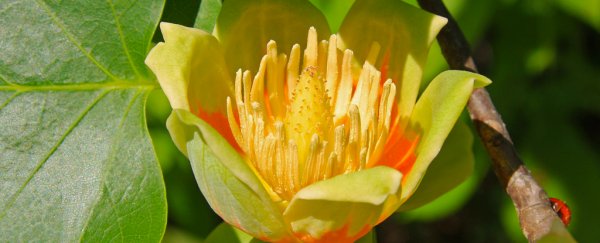With the supply lines blocked and antiseptics quickly running out during the US Civil War, Confederate physician Francis Porcher was tasked with an important job – find alternatives close to hand in the surrounding wilderness.
The substitutes he discovered didn't just make it into field guides for battlefield physicians; they've now been found to have antimicrobial properties that might lead to new breakthroughs in our fight against the rising tide of drug-resistant bacteria.
Researchers from Emory University took three of the several dozen specimens on Porcher's botanical medicines list, testing extracts made from their leaves and bark.
The native plants white oak (Quercus alba), devil's walking stick (Aralia spinosa), and tulip tree (Liriodendron tulipifera) were all found to inhibit the growth of a handful of some rather concerning pathogens.
"Our findings suggest that the use of these topical therapies may have saved some limbs, and maybe even lives, during the Civil War," says ethnobiologist Cassandra Quave.
By the mid-20th century, antibiotics had revolutionised the medical world with their ability to selectively kill agents responsible for infections.
Since then, bacteria's talent for swapping resistance genes like recipes at a bake sale has made it clear that antibiotics might not be capable of saving our skins forever.
Because of this, the search for alternatives is leading researchers to dig into history (quite literally in some cases) for ideas that fell by the wayside during our love affair with penicillin.
"I've always been a Civil War buff," says Daniel Zurawski, chief of pathogenesis and virulence at the Wound Infections Department in the Walter Reed Army Institute of Research.
"I am also a firm believer in learning everything we can garner from the past so we can benefit now from the knowledge and wisdom of our ancestors."
The extracts from white oak and tulip tree did a particularly good job against Staphylococcus aureus – some strains of which make up the insidious pathogen MRSA, on account of genes that provide antibiotic resistance.
Not only did the two extracts inhibit growth, they interfered with the microbe's ability to generate a protective biofilm layer, effectively dismantling one of its defences.
A solution made from devil's walking stick leaves was found to prevent the Staphylococcus samples from transcribing important signalling factors that would otherwise have helped make it more virulent.
Another potentially resistant bacterium they tested was Aceinetobacter baumannii, nicknamed Iraqibacter thanks to its association with returning veterans.
"It's emerging as a major threat for soldiers recovering from battle wounds and for hospitals in general," says Quave.
Finding that extracts from these three plants work well against bacteria in a Petri dish is one thing, of course. But translating the discovery into a new pharmaceutical is something else altogether.
These herbs might have been field-tested a century and a half ago, but these days we expect things like accurate dosages, and a clear understanding of potential side effects. Two of the tulip tree bark extracts presented strong indications of being toxic to our own cells, for example.
With further research, though, understanding the mechanisms at work could eventually lead to some brand-new medications that offer novel ways to fight infections.
"Plants have a great wealth of chemical diversity, which is one more reason to protect natural environments," says biologist Micah Dettweiler.
"Our research might one day benefit modern wound care, if we can identify which compounds are responsible for the antimicrobial activity."
There are 37 plant species identified by Porcher as having some medicinal value. Further research could continue to sort which – if any – are hiding compounds that might provide formidable against the infectious diseases that are set to plague us.
As a Confederate and a slave-owner, Porcher wasn't on the winning side of history – a fact we can't simply ignore.
But being critical of the physician's ideologies need not come at the expense of finding a use for his medical contributions.
This research was published in Scientific Reports.
